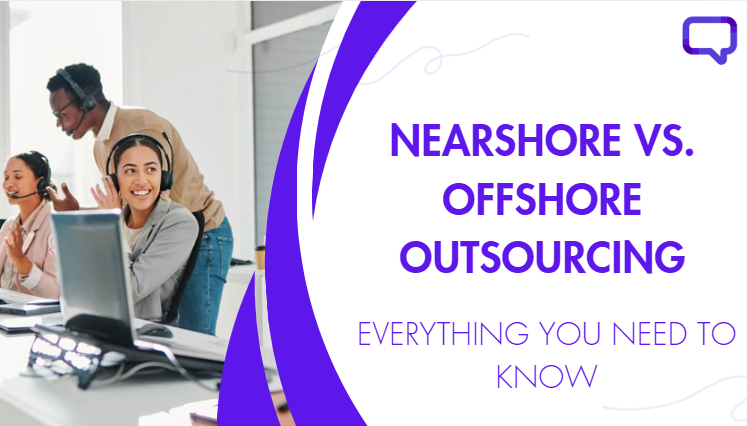
Nearshore vs Offshore Outsourcing: Which Outsourcing Model To Choose?
Today, outsourcing has become an essential approach for cutting costs. Recent research shows nearly 60% of companies outsource at least one service to save money.
You could approach a business through text, get the initial information you need, then transfer the contact to calls, and then emails, all without breaking communication and in a unified manner. This is called omnichannel support.
Omnichannel support is a way to help customers using different communication methods that work together. This strategy makes it easy for customers to switch between methods without losing information.
Here are some important terms related to omnichannel support:
Understanding these terms helps explain why omnichannel support is important for businesses. By connecting different communication methods, customers can get the help they need quickly and easily.
Some businesses have multichannel support in place whereas some offer omnichannel support.
Following are the differences between the two:
In summary, the main difference between omnichannel and multichannel lies in the level of integration and consistency across the various communication channels.
Omnichannel support aims to deliver a seamless, unified experience by integrating all channels, while multichannel support offers multiple independent channels for customers to interact with a business.

Today, outsourcing has become an essential approach for cutting costs. Recent research shows nearly 60% of companies outsource at least one service to save money.

As a business owner, managing in-house teams and various projects on your own can sometimes feel too difficult and too expensive. That’s where outsourcing can

Nearshore outsourcing is a great way for businesses to save costs while still keeping projects on track. From cost savings to overlapping work hours, it

When it comes to outsourcing, businesses usually look at three main options: onshore, nearshore, or offshore outsourcing models. While the common goal is often the

If you’re a business owner looking to delegate tasks, onshore outsourcing is a smart way to save time and money. It simply means partnering with

Onshore outsourcing means partnering with third-party service providers in the same country. Also known as “domestic outsourcing”, it is more budget-friendly, saves you a lot
Have any more questions? Reach out to us and we’ll get back to you in no time!
© 2024 HiredSupport | All Rights Reserved